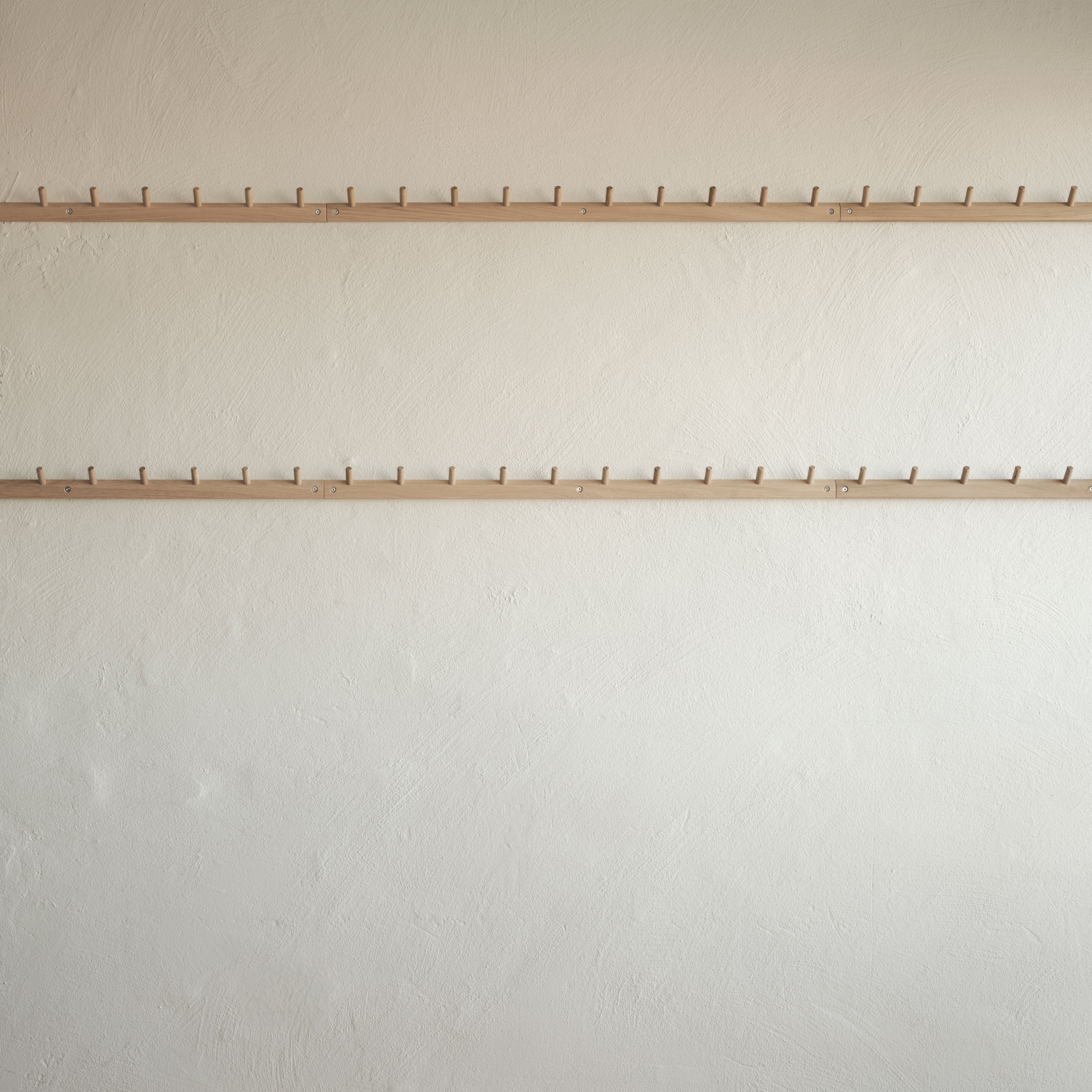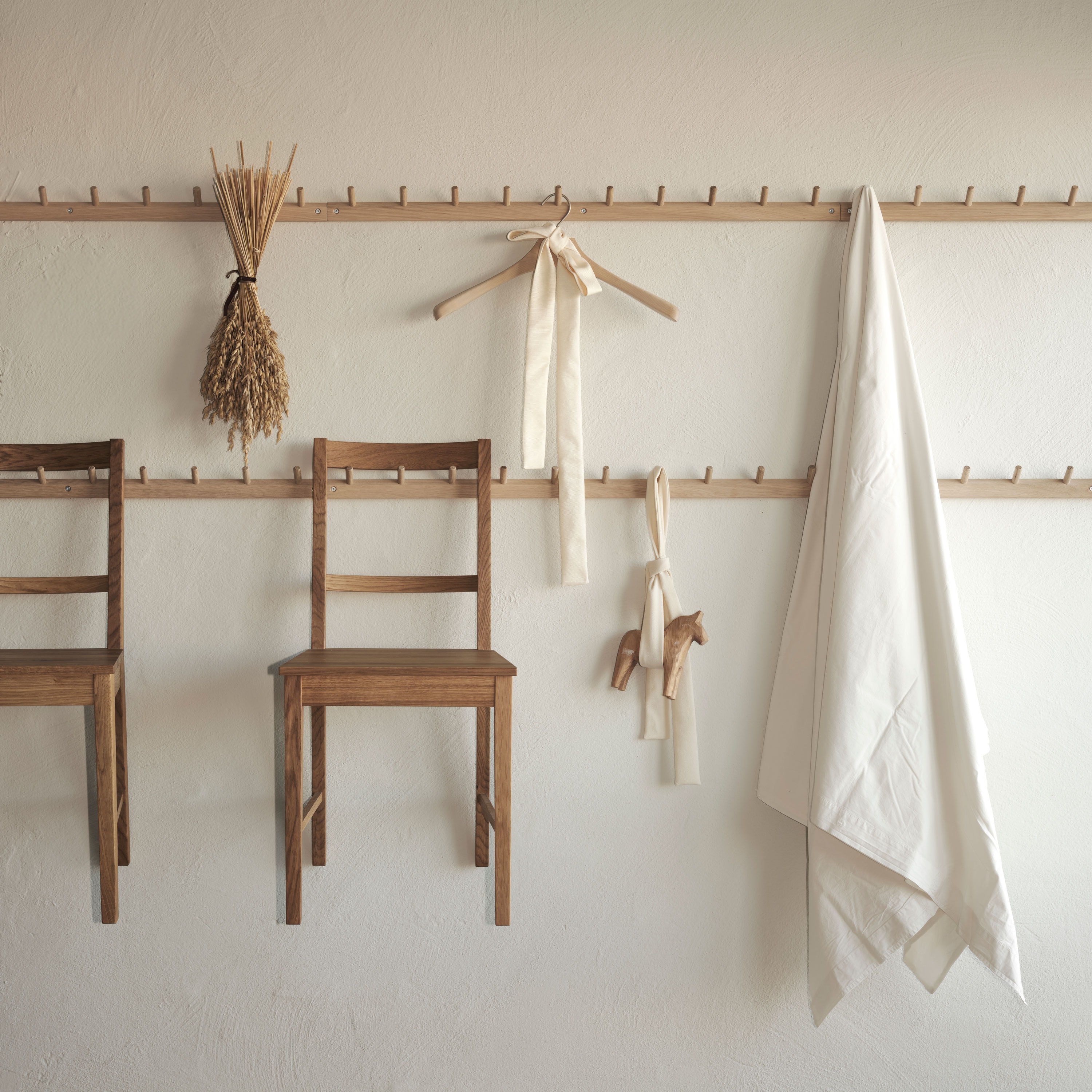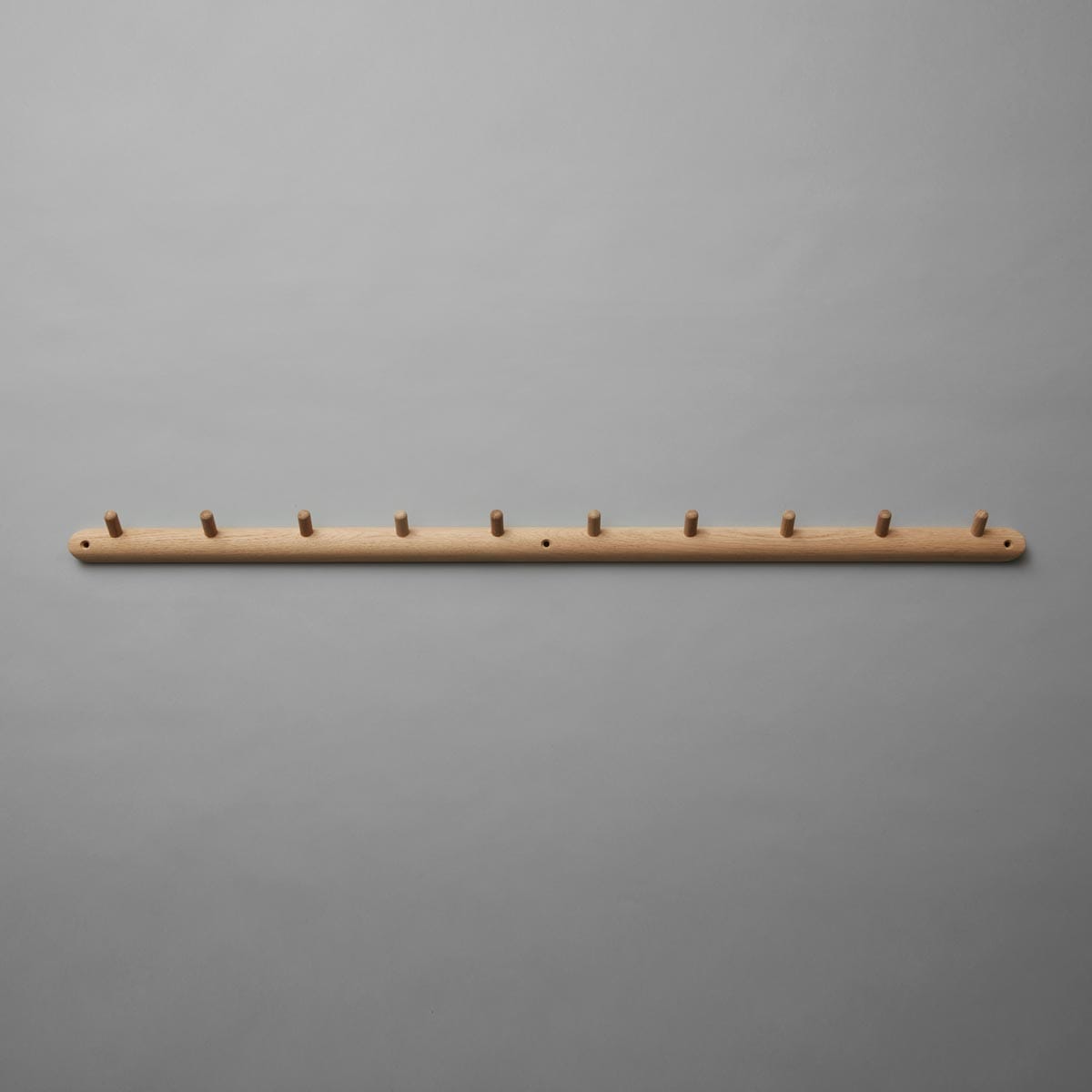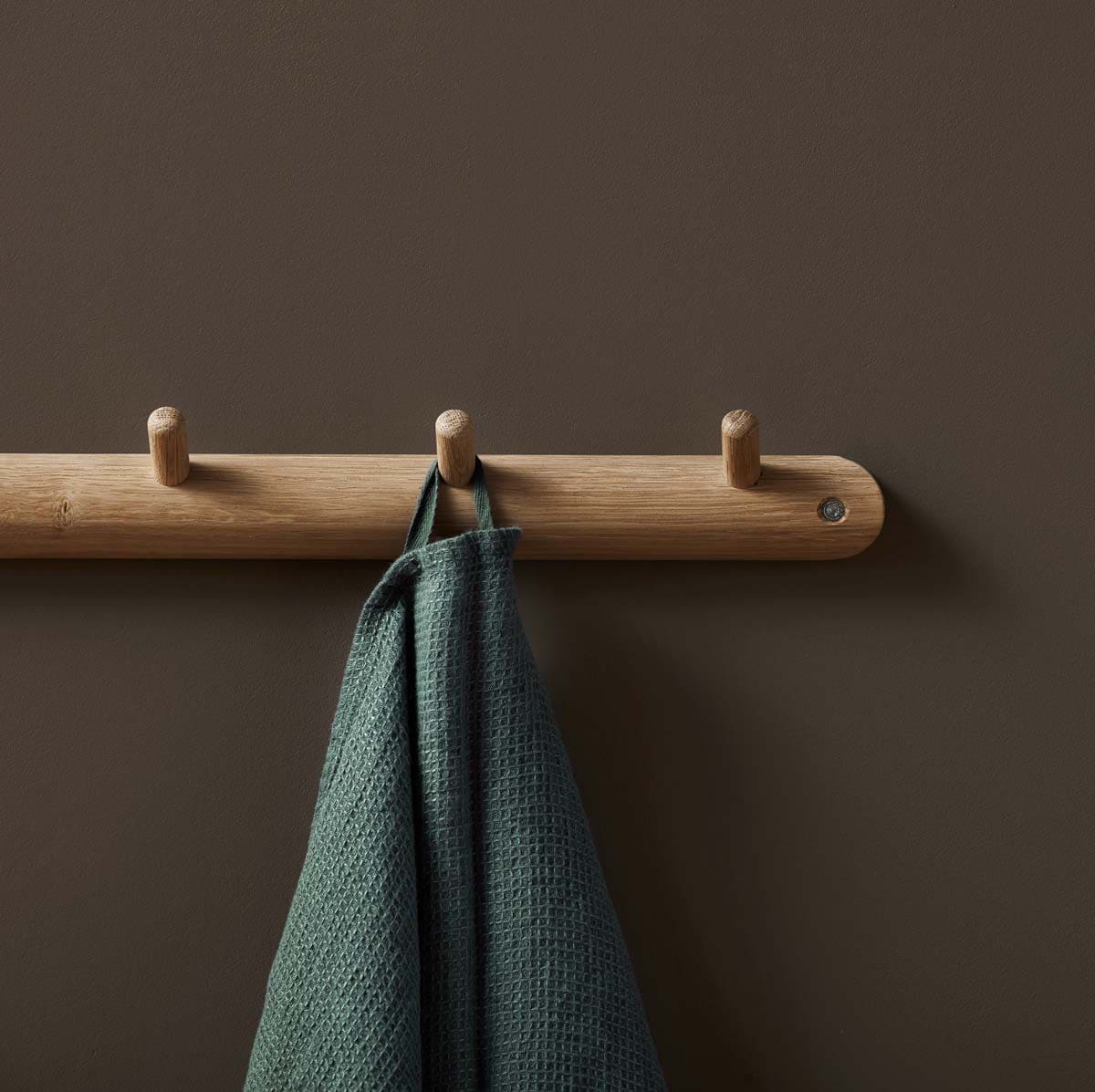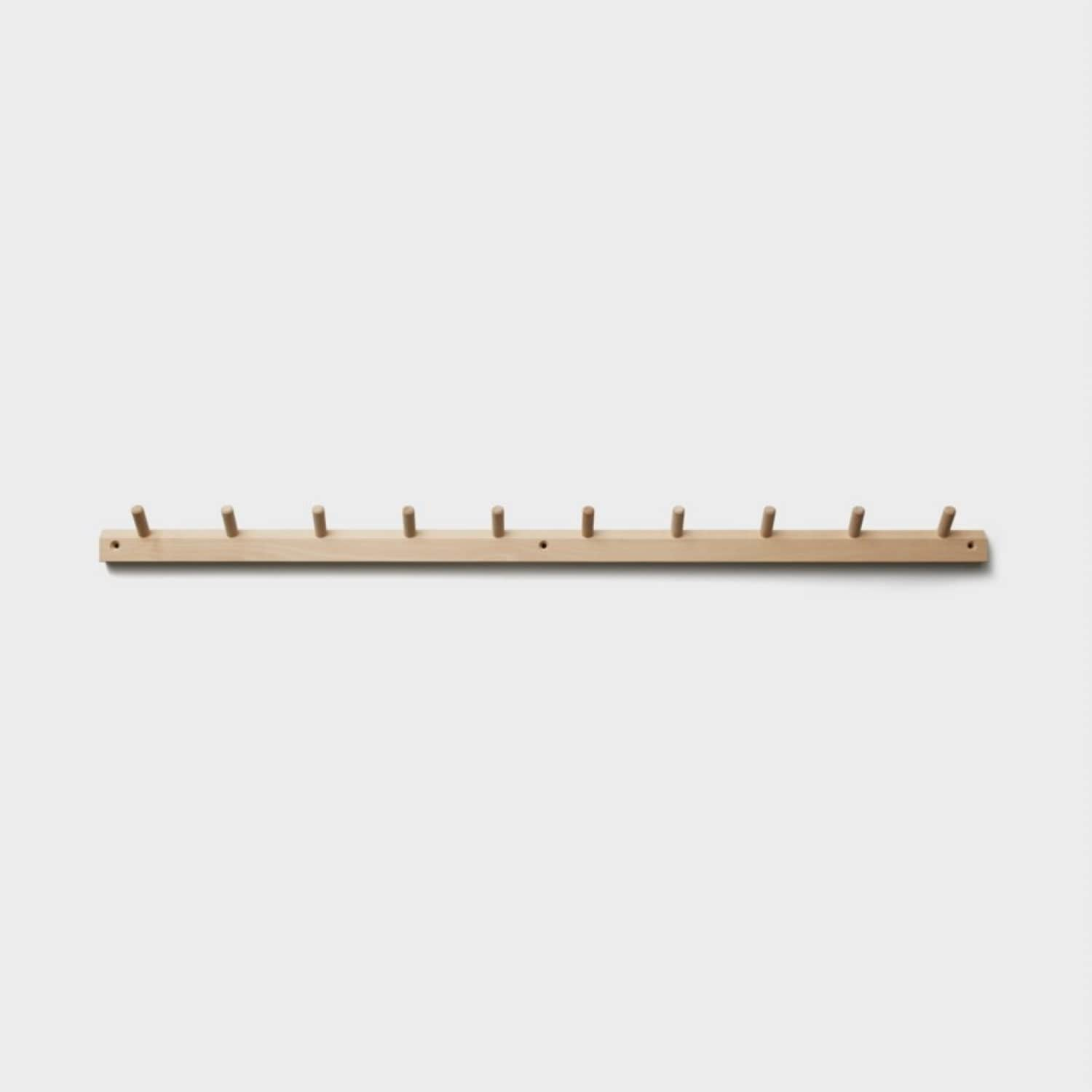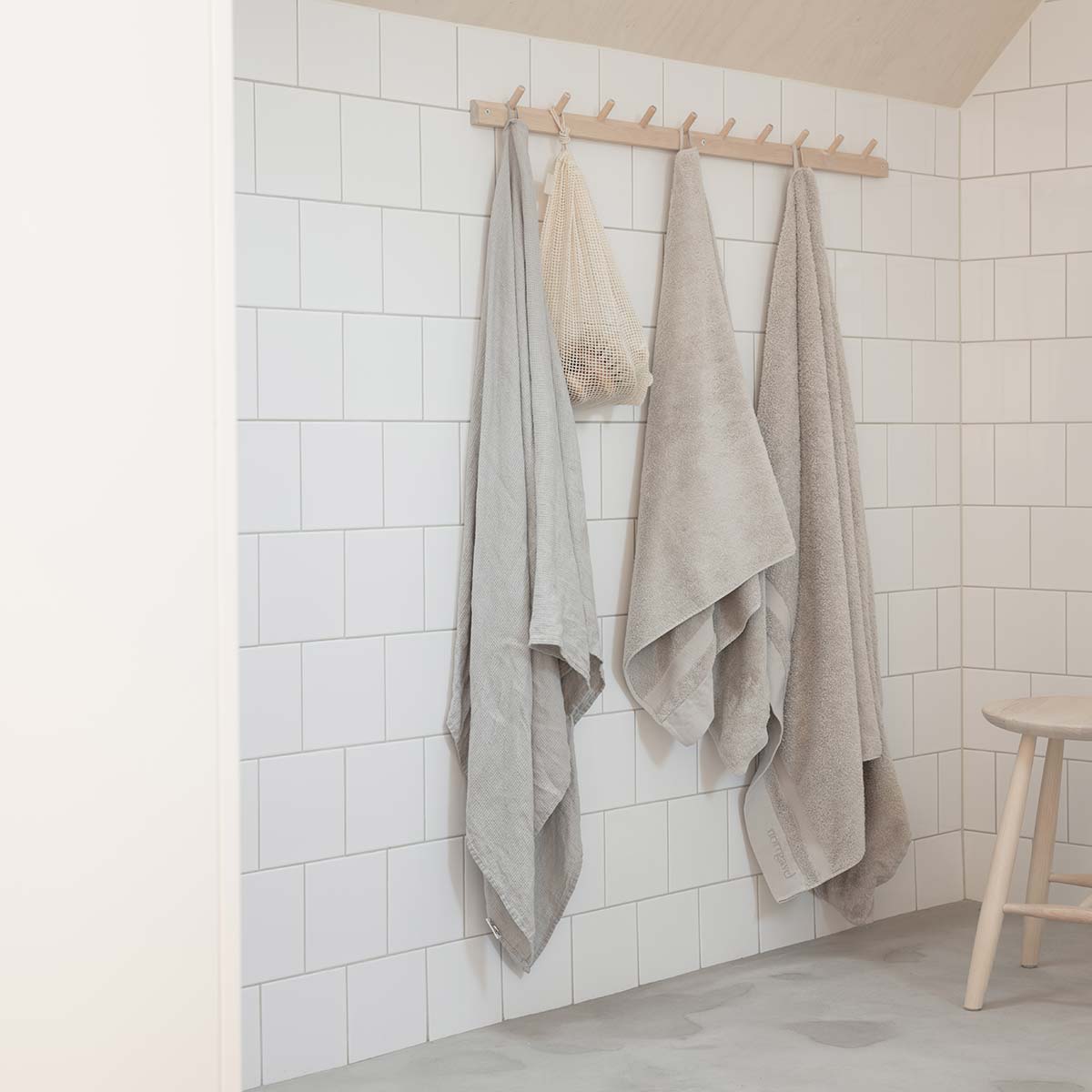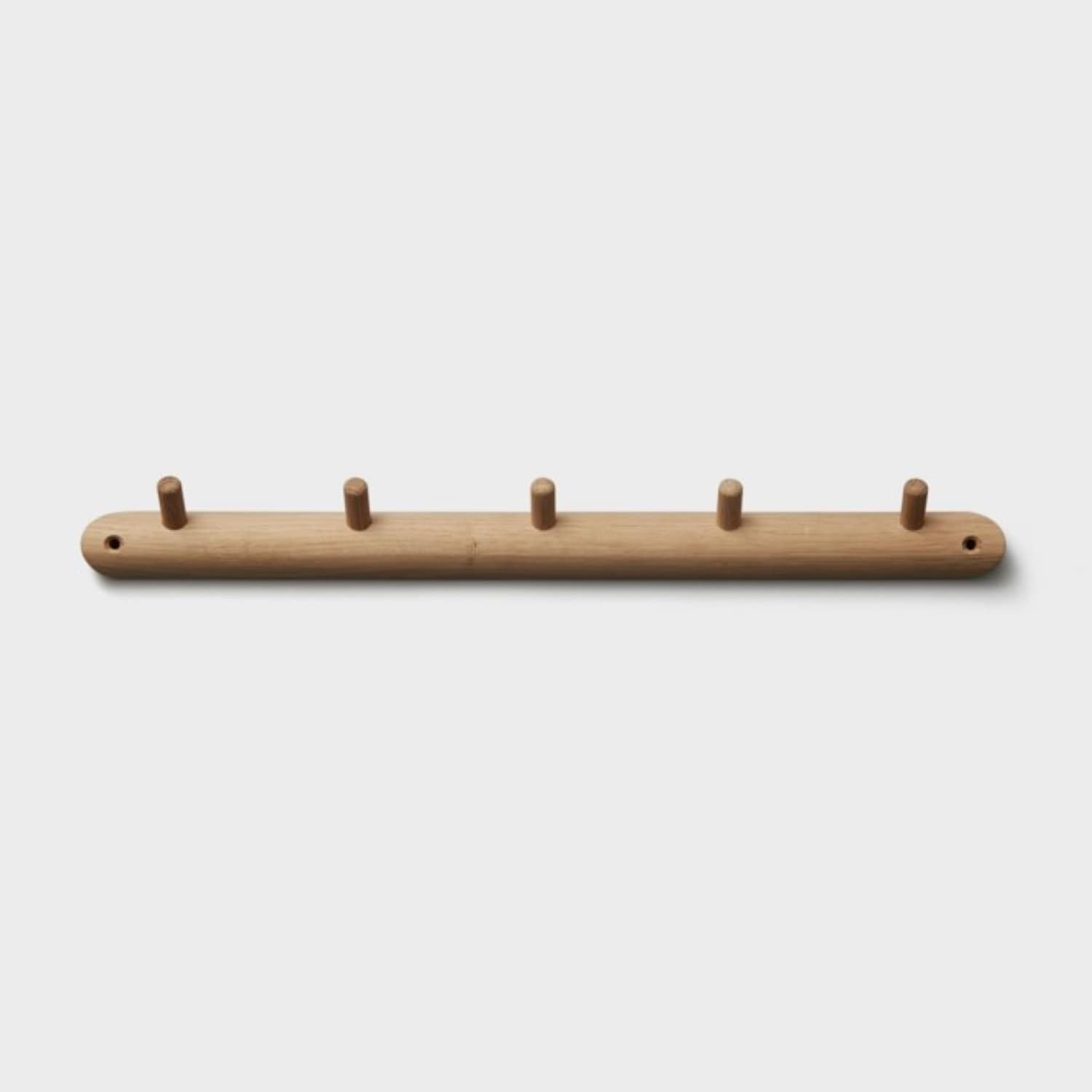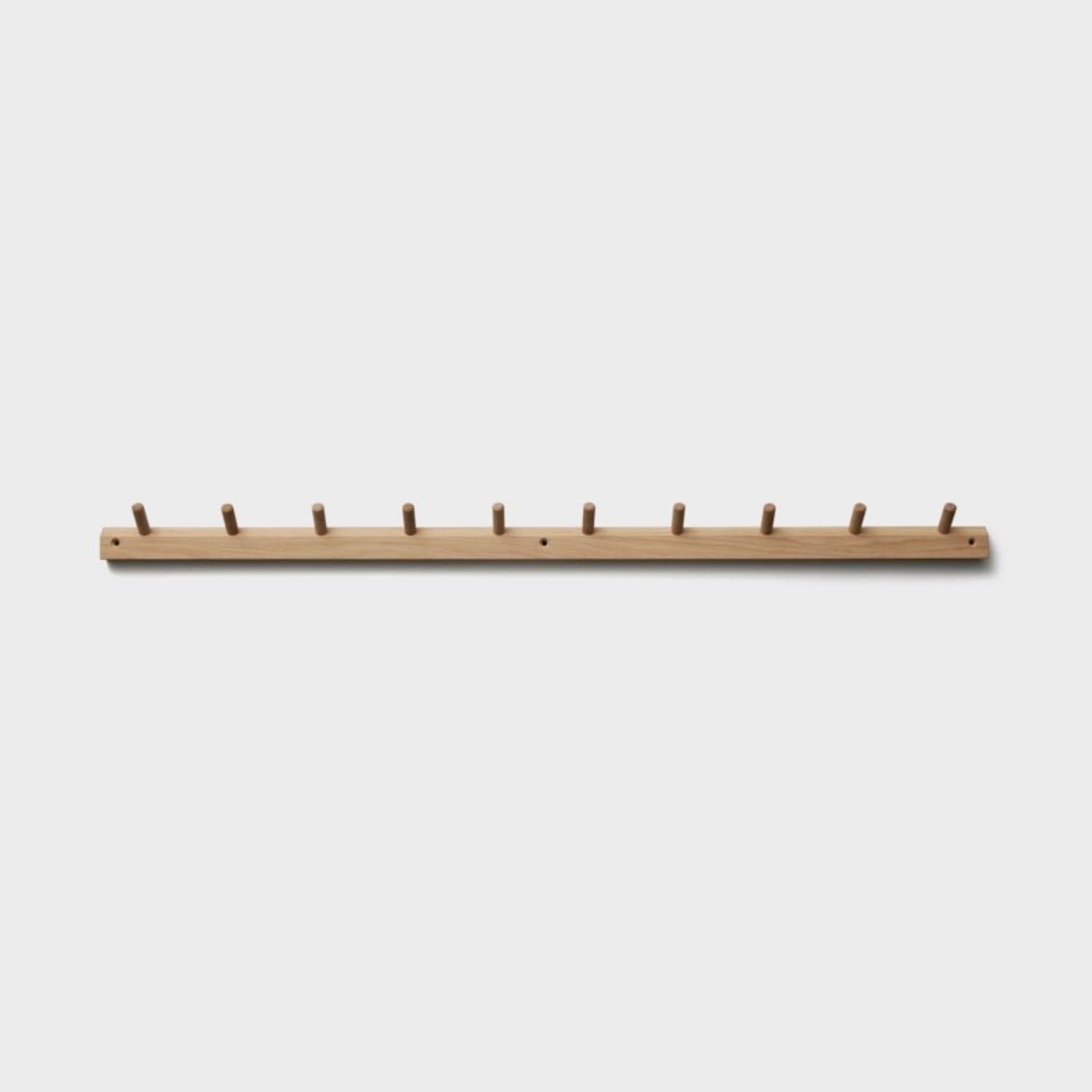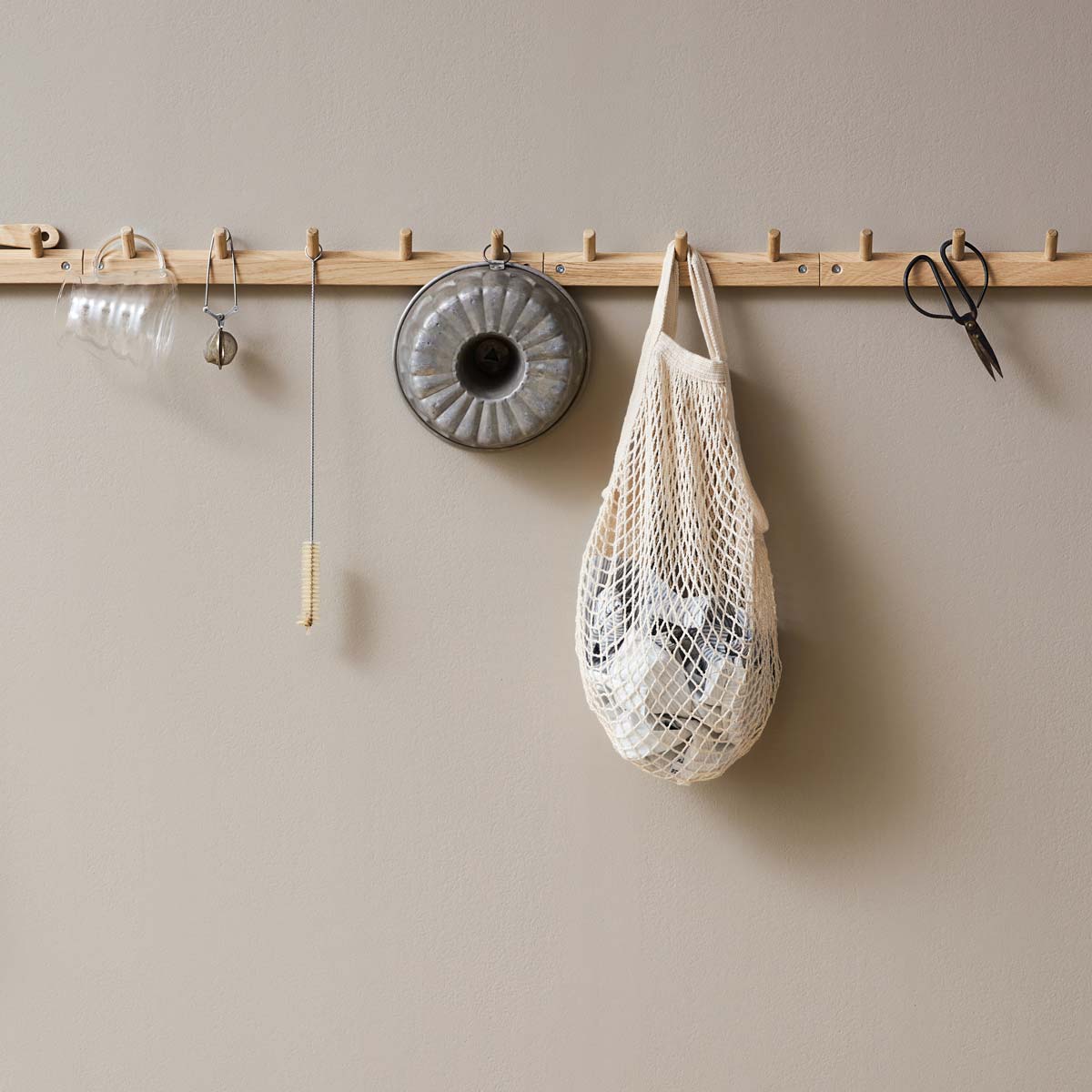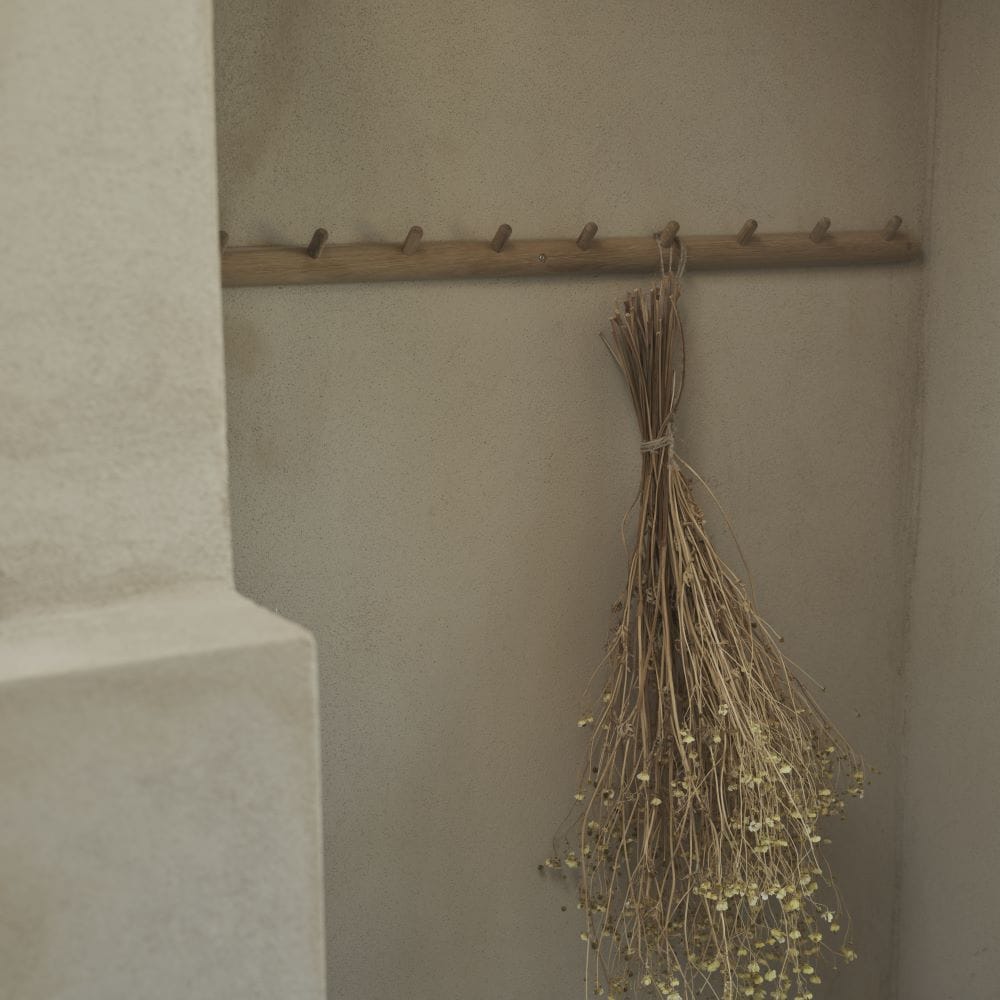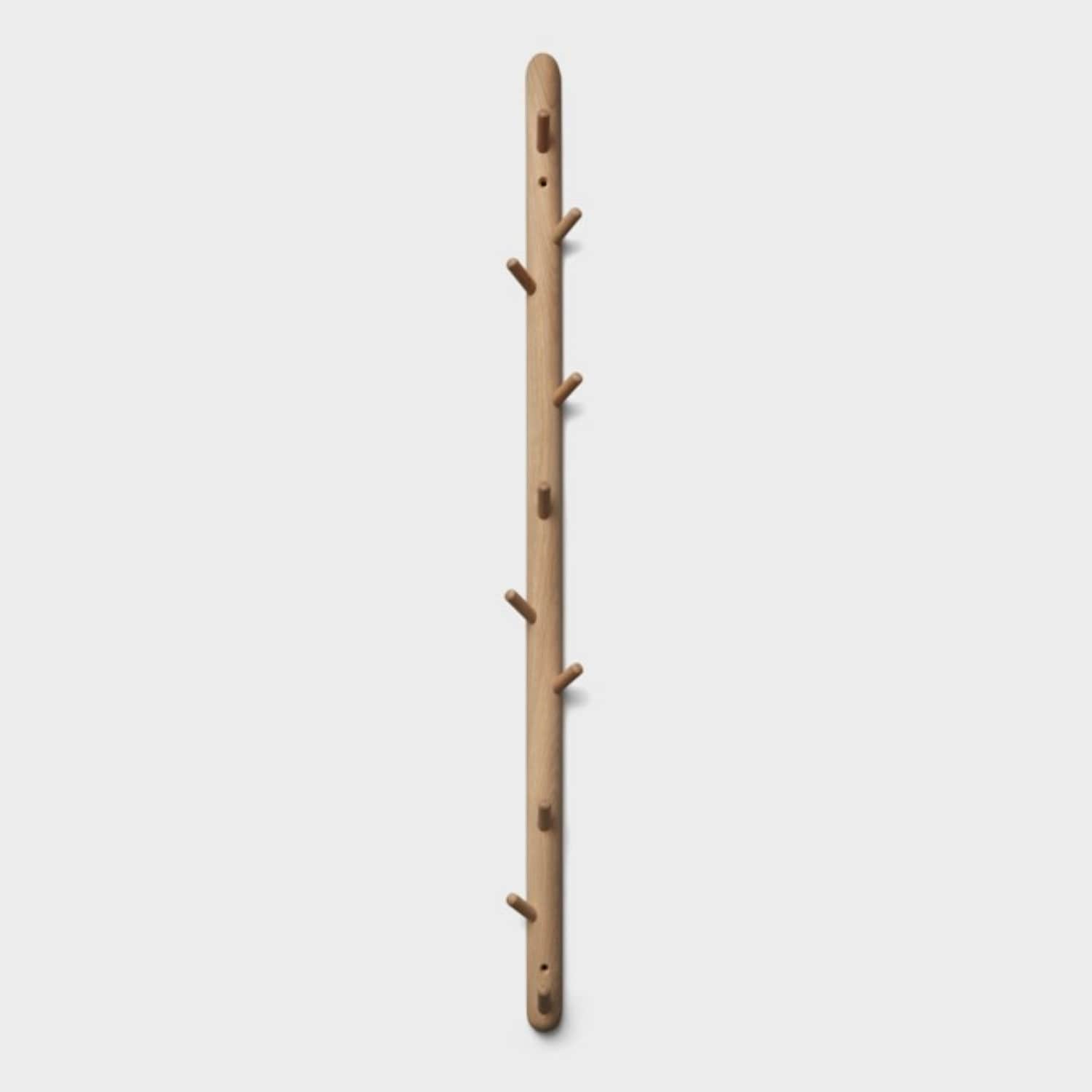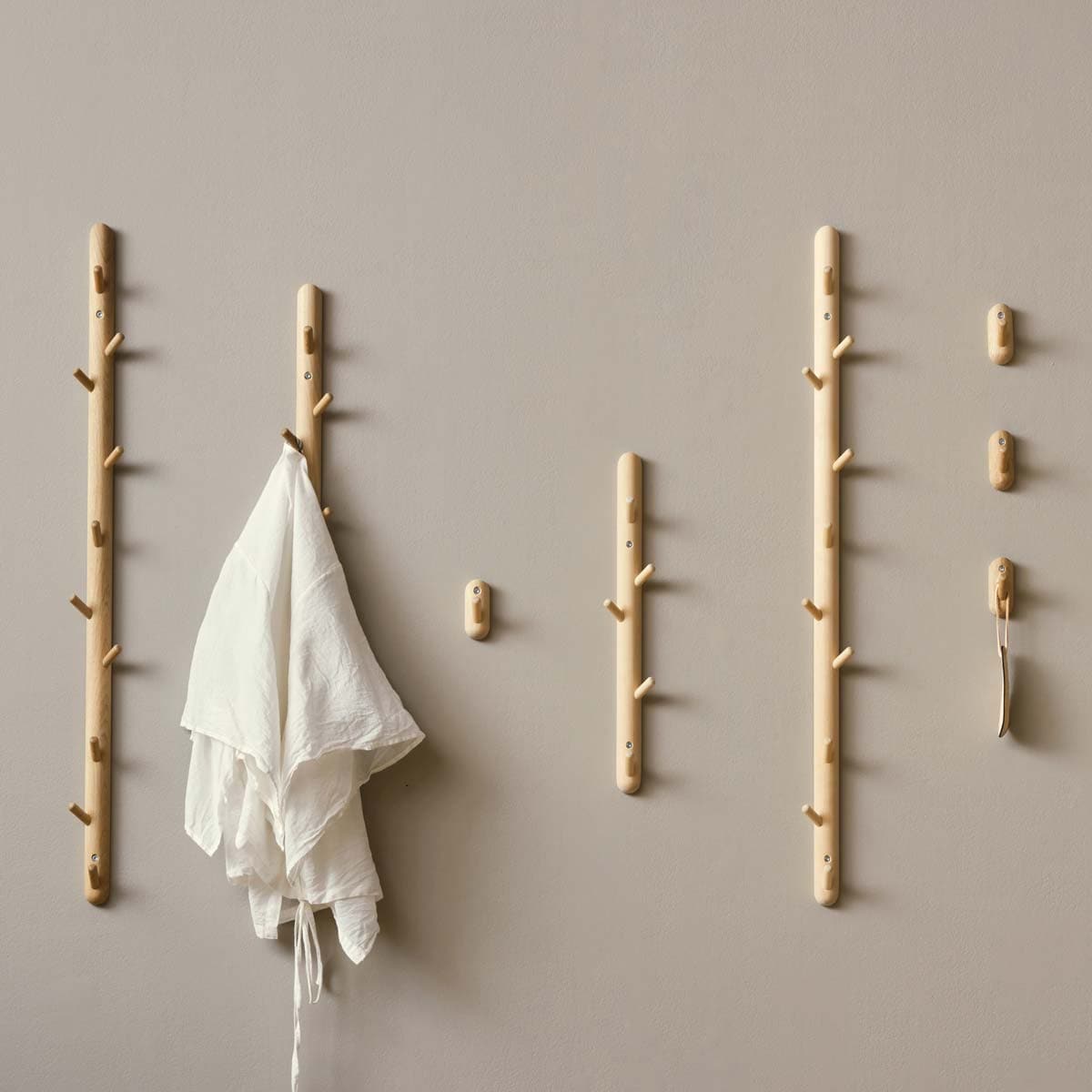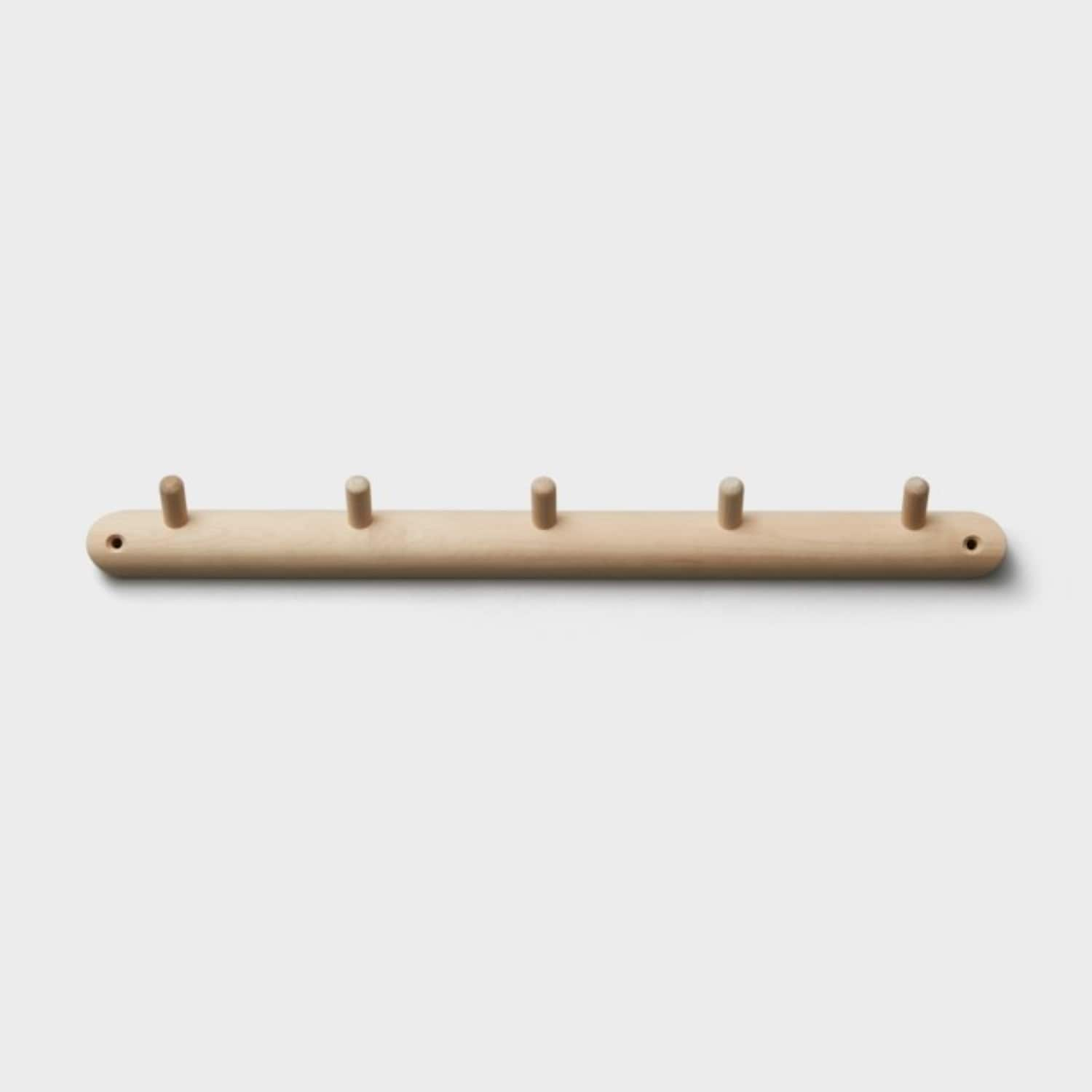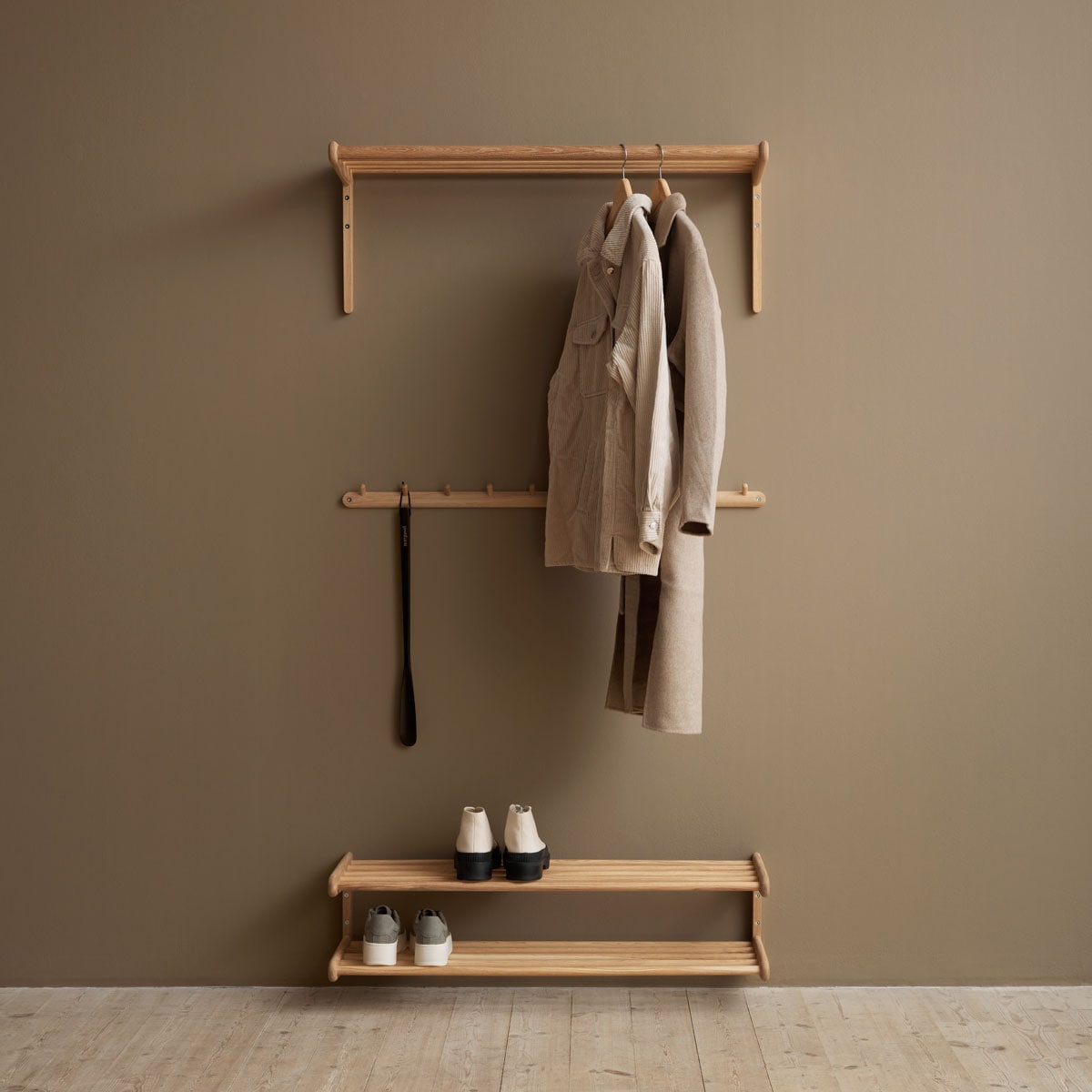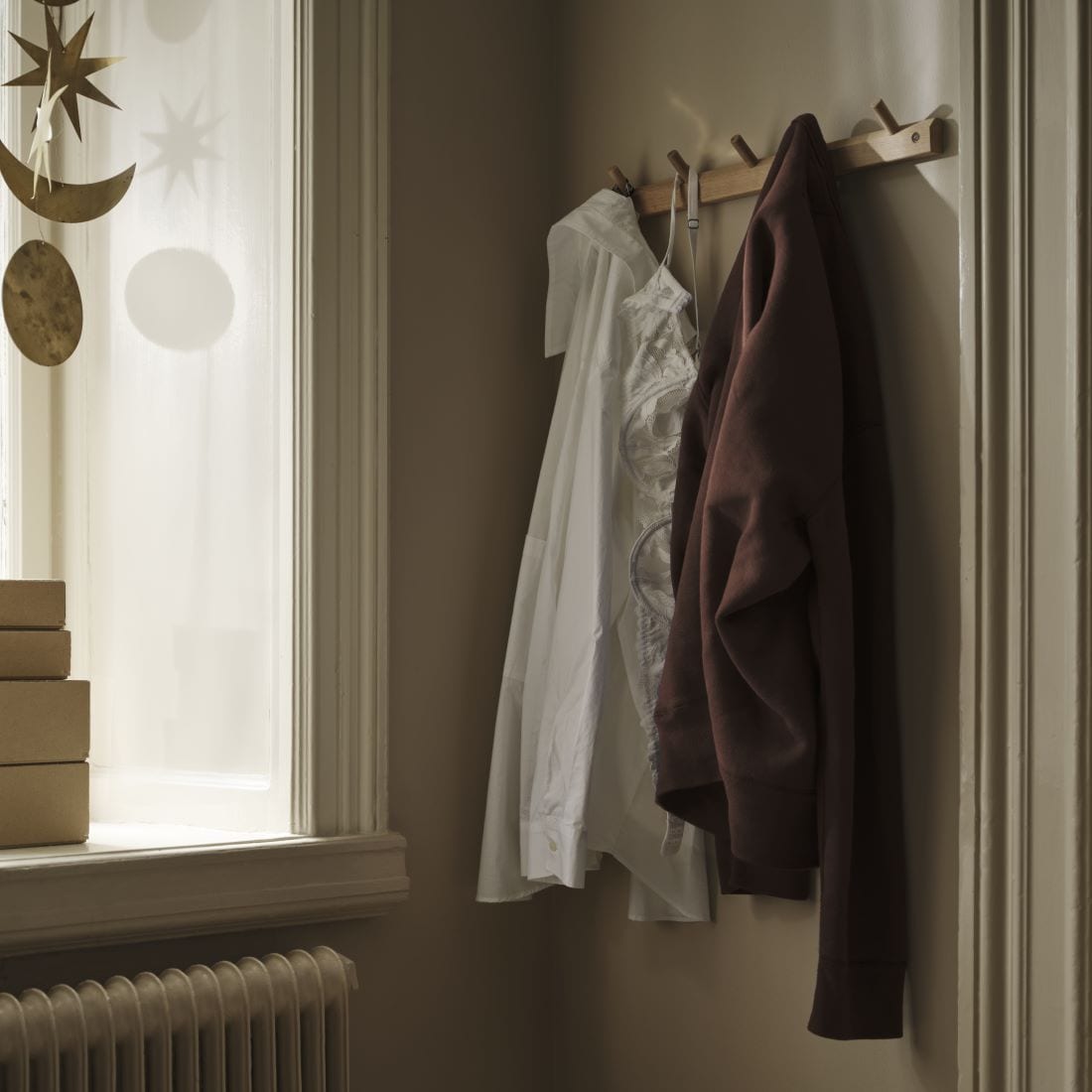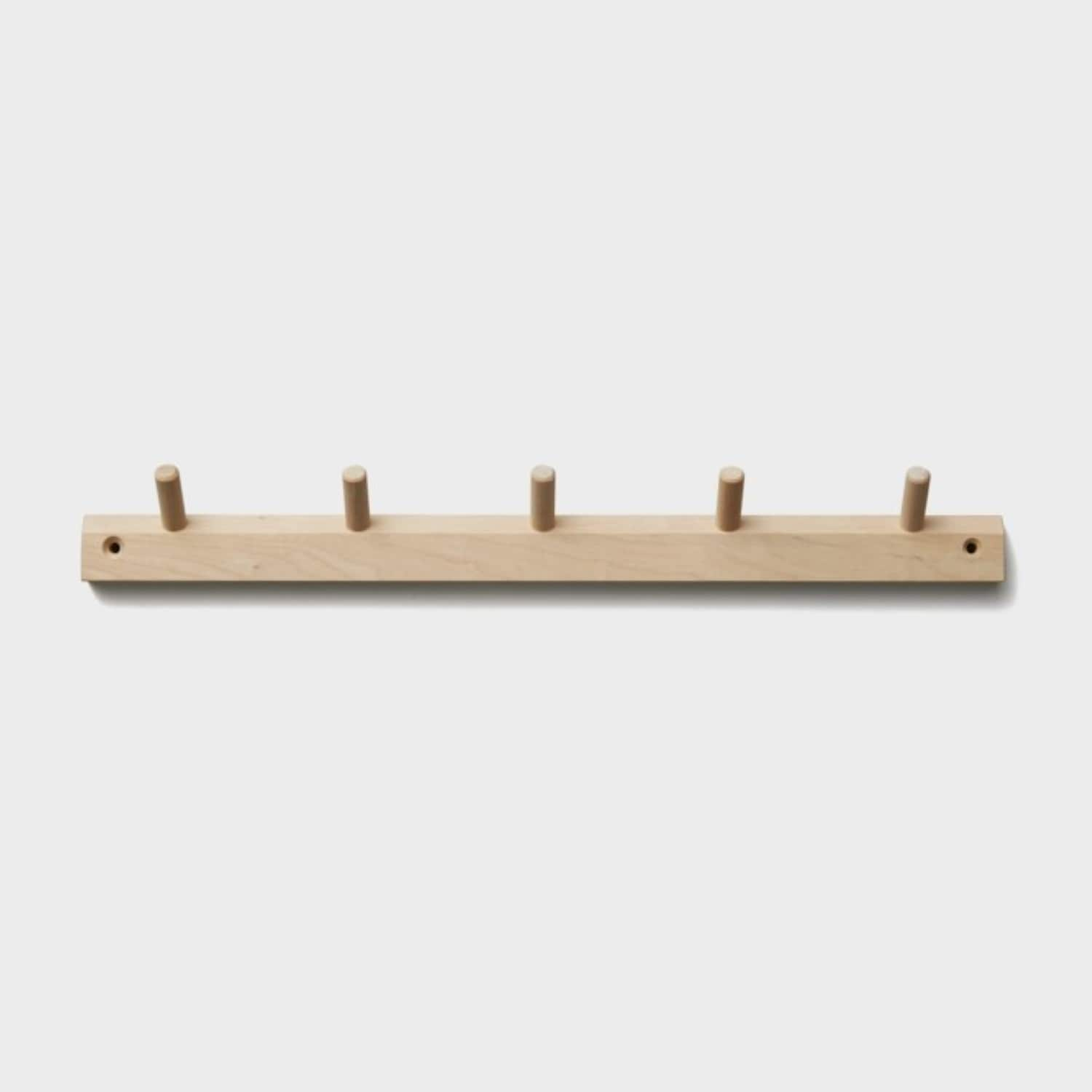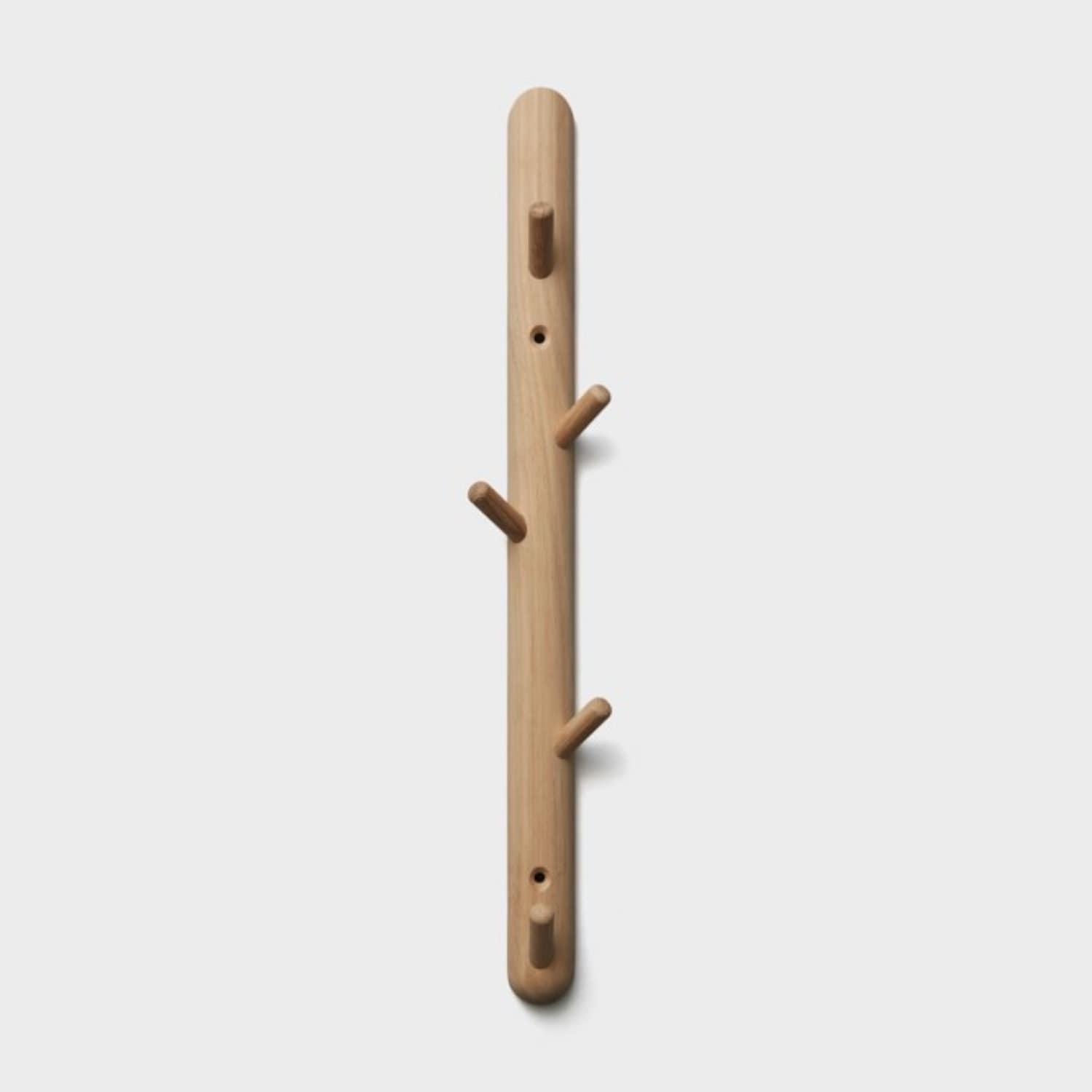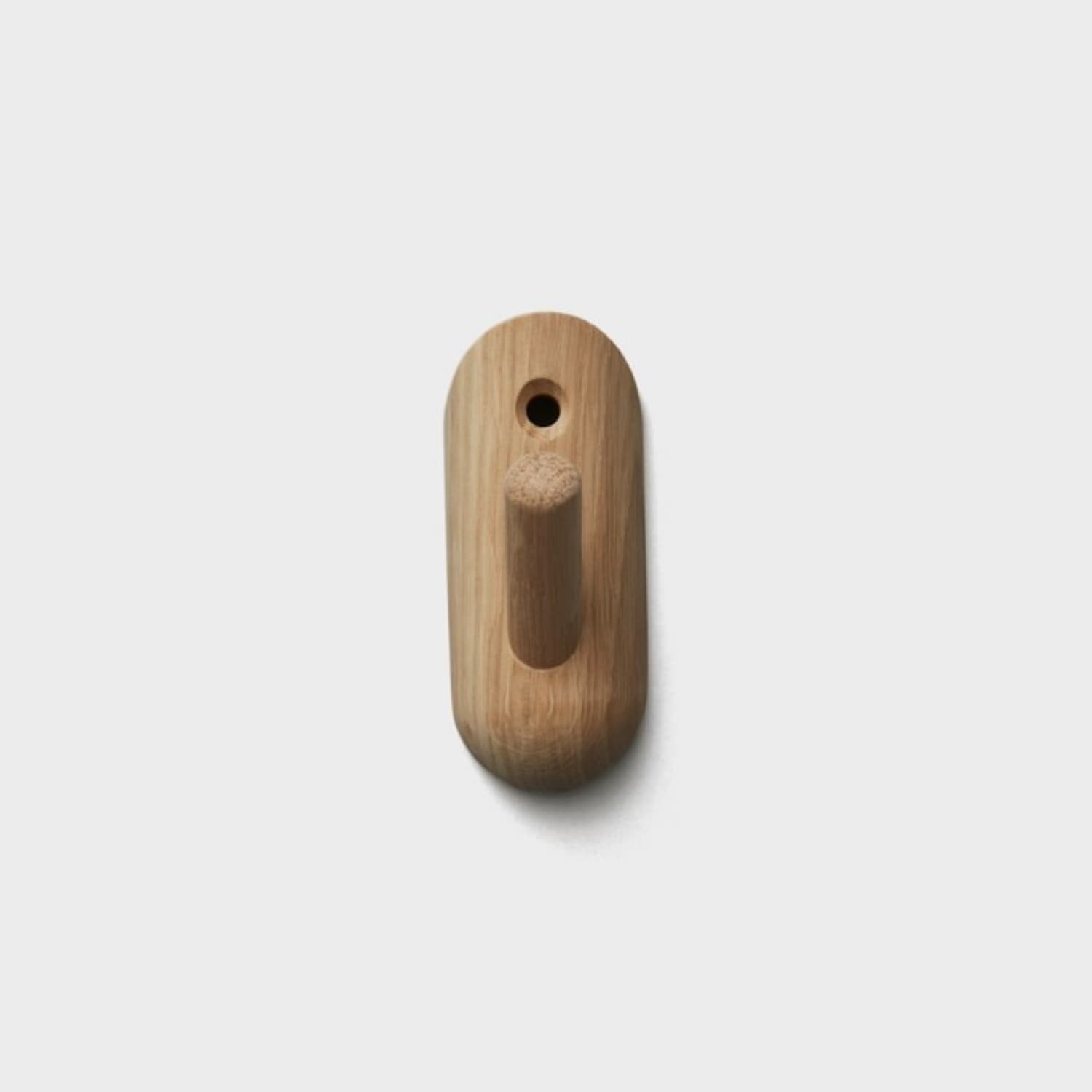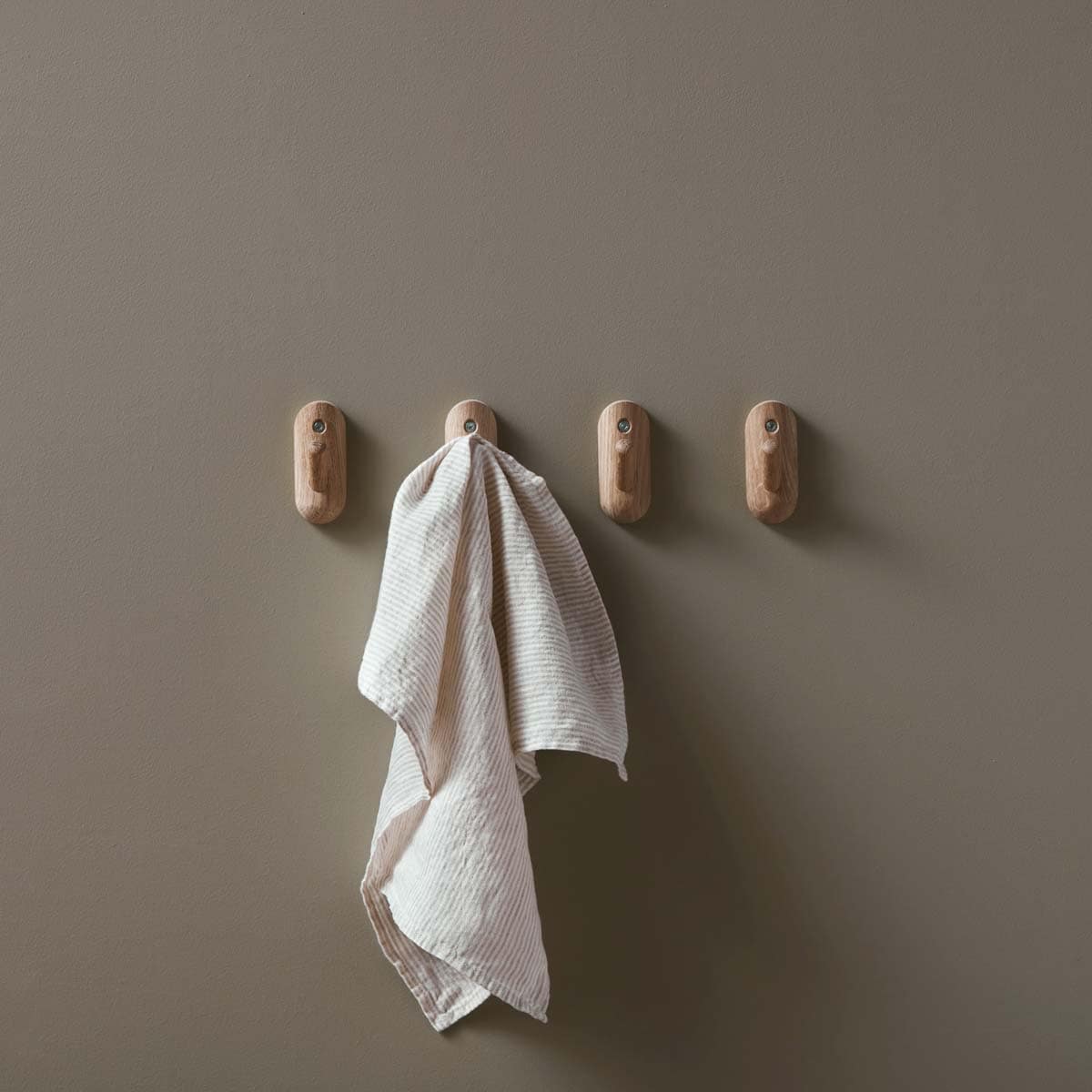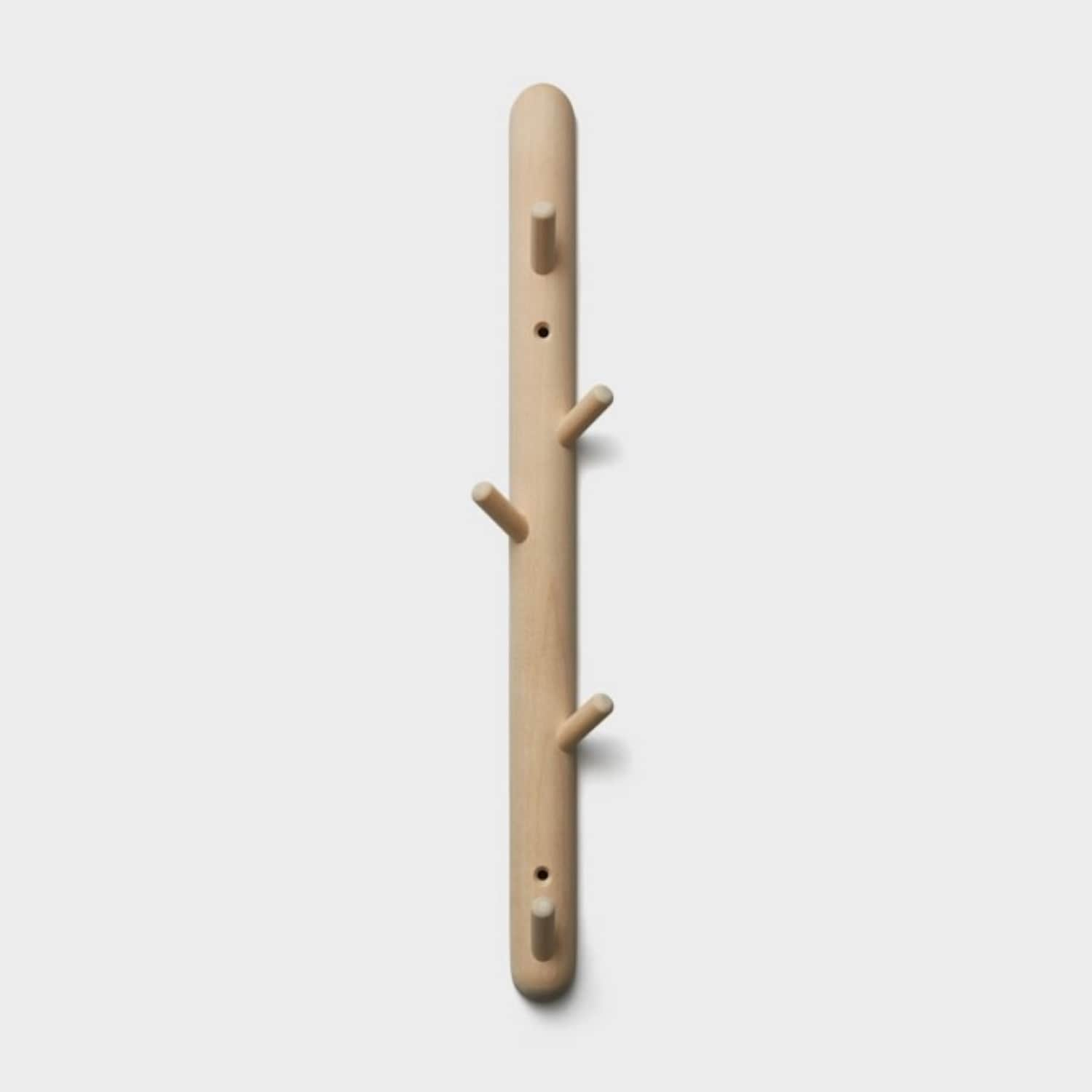The peg rail as principle — not just furniture
One of their most characteristic solutions was the long line of wooden pegs running along the walls in almost every room. Peg rails were not decoration, but a living tool. Here one could hang what was in daily use: clothing, tools, brushes — even chairs.
When objects were lifted off the floor, the room opened up, and the space could be swept through in a single motion. Order wasn’t something you “did” — it was a habit, a flow, a motion. Surfaces could remain clear. The gaze could rest. The room allowed space to breathe.
This was not minimalism as style, but simplicity as a way of living — letting the essential be visible, and allowing everything else a quiet place close at hand.
Storage and spatial calm
“If the last century was bent on accumulating, we are (now) equally insistent on getting rid of the clutter. (…) Our appreciation of space is one reason for our appreciation of the airiness and roominess of the Shaker style.”
— Curator and author June Sprigg in By Shaker Hands
Shaker homes were built with storage that followed the lines of the architecture and walls. Objects could rest behind doors — close at hand, but without dominating the room. The result was an unusual stillness, a palpable calm.
Here, order was not about hiding or removing, but about letting things have their lovingly designated place. Cabinets, shelves and chests carried not only things, but spatial presence — proportions that let the eye rest, materials that age with dignity. Storage became part of the architecture itself, and the room felt lighter to inhabit.

